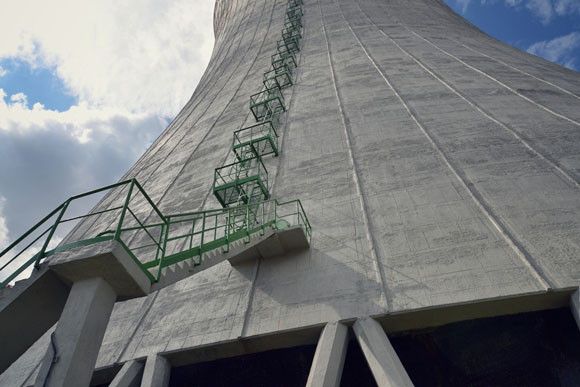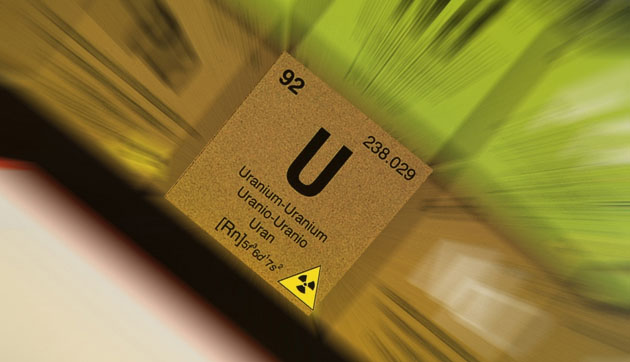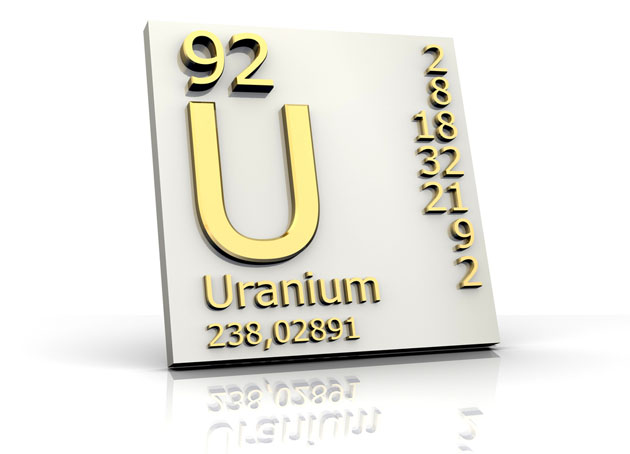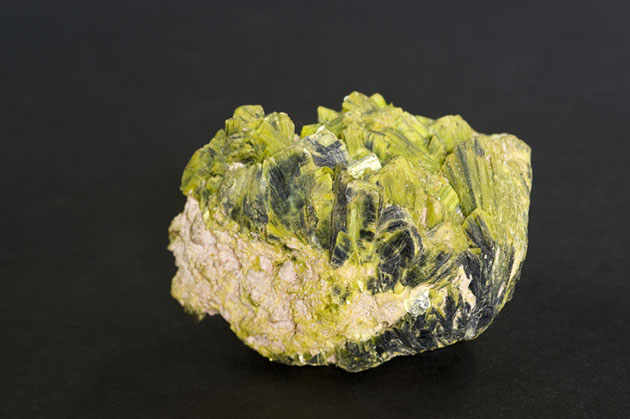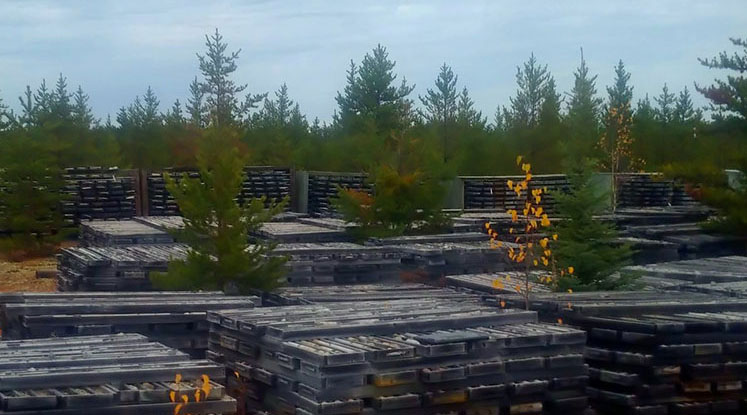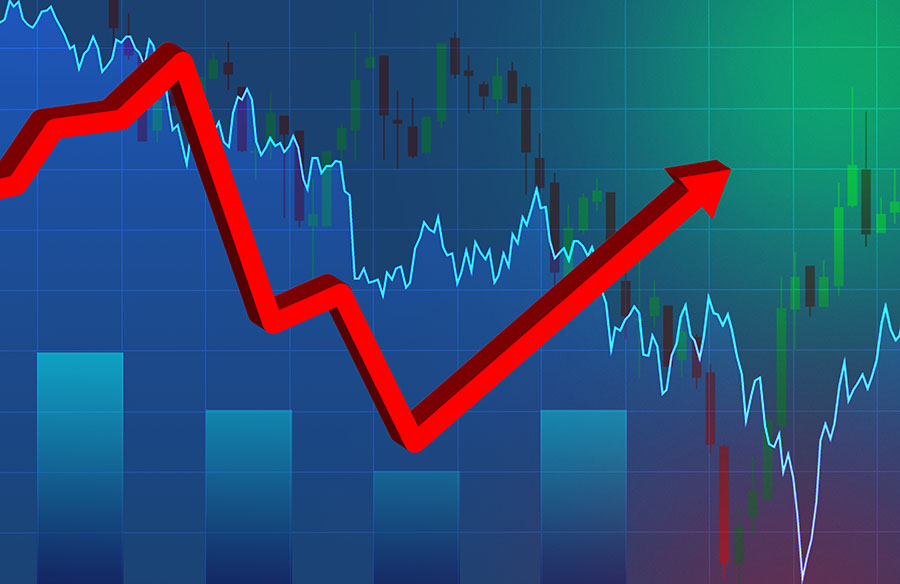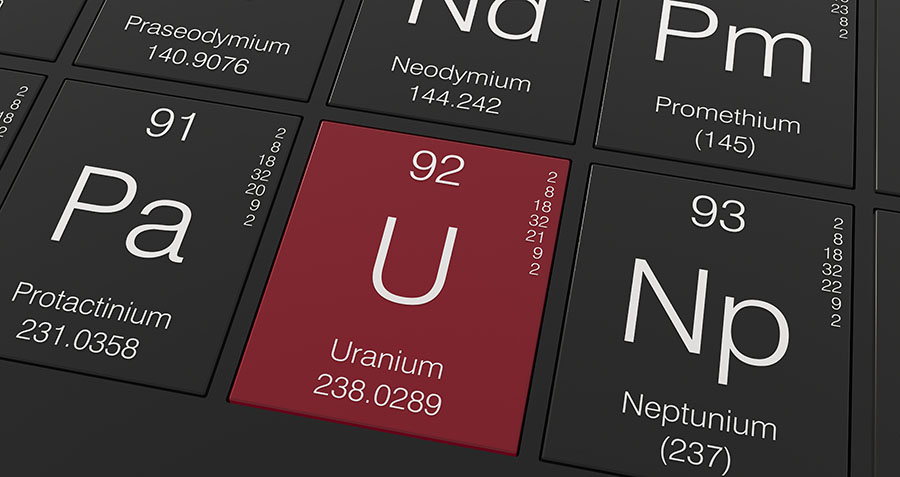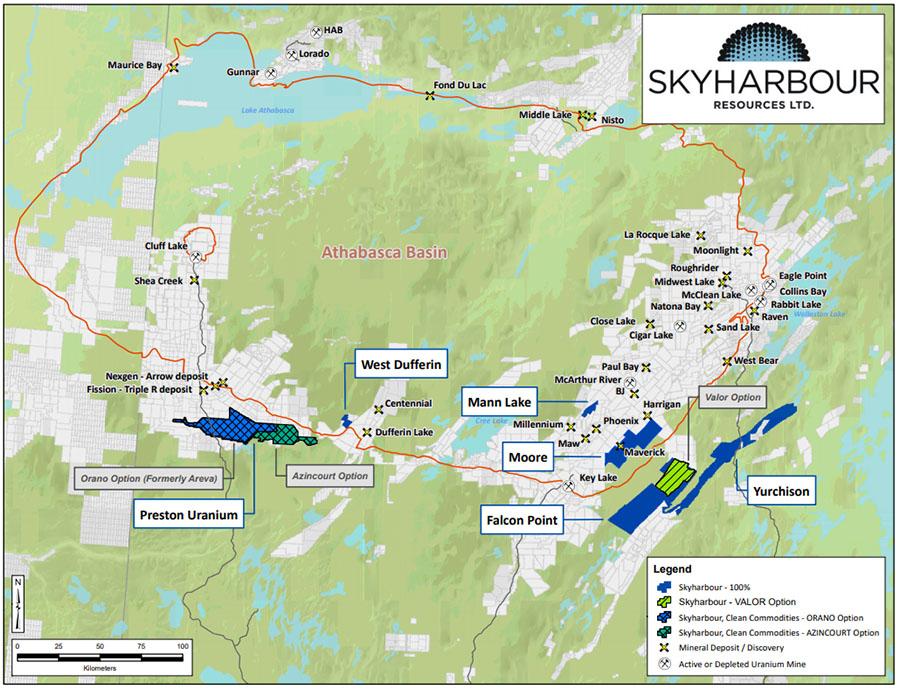TICKERS: BNNLF, CCO; CCJ, EXT, KAH, PDN, UUU
Nuclear Energy Markets Tighten: Edward Sterck
Interview
Source: Zig Lambo of The Energy Report (1/19/12)
 Demand for uranium is expected to continue growing as China spearheads the conversion of new energy production from coal to nuclear. In this exclusive interview with The Energy Report, BMO Capital Markets Analyst Edward Sterck brings us up to date on how investors can best play this market and which companies are most likely to pick up the supply-side slack.
Demand for uranium is expected to continue growing as China spearheads the conversion of new energy production from coal to nuclear. In this exclusive interview with The Energy Report, BMO Capital Markets Analyst Edward Sterck brings us up to date on how investors can best play this market and which companies are most likely to pick up the supply-side slack.
The Energy Report: There hasn't been much price action in the uranium market since you last spoke with The Energy Report in early September. Does that surprise you at all and what are your expectations for near-, medium- and longer-term market action?
Edward Sterck: It doesn't surprise me particularly. Historically, a lot of utilities were operating on a fairly hand-to-mouth basis in terms of their uranium requirements. The price spike in 2007 was a bit of a wakeup call for utilities. Since then, they've been building up some buffer inventories and are pretty fully covered for near-term requirements. By near term, I mean for the next nine months or so. Consequently, they can currently choose to be quite price selective.
Looking ahead, therefore, it is quite hard to pinpoint anything that is going to act as an absolute catalyst for the uranium price in the near term, short of a significant supply disruption at any of the mines or some political upheaval. If Iran tries to close the Strait of Hormuz, that could obviously have a positive impact for oil prices and potentially the energy suite in general, possibly including uranium.
In the mid- to longer-term, however, I think that the supply-demand equation probably is going to get tighter. The supply side is currently more constrained than it has been for a while. Many of the big existing operations that have been in production for a number of years are actually struggling with declining grades and they are missing production targets. Cost inflation is also something that's been bugging the mining industry in general and that's eroding the economic profitability of operations. Cost inflation is also a big factor with the new supply that is needed to come onstream. The incentivisation price for new production is increasing fairly significantly and the timing of new projects is less certain than it was previously.
Look at the mid- to longer-term demand side of the equation: Despite Fukushima, there is still a case for strong demand growth. The countries that are the big drivers of growth in installed nuclear capacity, namely China, Russia, South Korea and the Middle East in general are pushing ahead with their plans, regardless of other events that have unfolded. Less certain supply could result in a tighter market and have a potentially positive impact on the uranium prices.
TER: It appears that China is leading the pack in terms of uranium demand. Is that the way you see it?
ES: In terms of demand growth, absolutely. China has very ambitious plans for expanding its power generation capability, and it's very incentivized to do so. It has to maintain growth in electrical power generation to keep its economic growth on course. It needs to focus on nuclear power because of the tremendous atmospheric pollution created by the coal-fired power plants in China that burn low-quality coal. Obviously, coal's health impacts are significant, and the death rate in China from pulmonary illnesses associated with atmospheric pollution are extremely high. On that basis, it is pushing forward with renewables and nuclear power. I don't see any reason for it to pull back from that now. The Fukushima disaster has only caused China to be a bit more circumspect in deciding where it will actually license nuclear reactors to be constructed.
TER: It seems that along with all the other natural resources it's trying to tie up, the nation is trying to tie up as much uranium supply as it possibly can. China Guangdong Nuclear Power Group recently made that cash offer for Kalahari Minerals plc (KAH:LSE; KAH:NSX), which owns 43% of Extract Resources Ltd. (EXT:TSX; EXT:ASX). What are your thoughts on this deal?
ES: The Kalahari deal is a friendly one and it would be surprising not to see it go ahead. Most shareholders of Kalahari are probably sitting on pretty reasonable profits compared to the rest of their portfolios, so it might be a good time to crystallize some of those profits and perhaps reallocate that cash elsewhere. What will be quite interesting is how it transposes into a broader bid for Extract Resources. The Australian Prudential Regulatory Commission has ruled that because Kalahari has a greater than 30% interest in Extract, that same offer has to be shown to all of the rest of the Extract shareholders as well. The deadline for that is still a few weeks away, but I imagine that the bid will be made for the whole of Extract. We'll have to see then whether Extract's own board of directors decides to approve that or not.
TER: So that would basically take two companies out of the picture.
ES: It would be consolidating ownership of the Husab uranium project, which Extract owns.
TER: With the challenges involved in bringing uranium projects into production, it seems that anything that looks reasonably viable is a potential acquisition target for someone higher up the food chain. Do you see this trend continuing?
ES: I think that's a pretty reasonable possibility. The only caveat I'd add is that given the cost inflation in the mining business in general, it's actually quite hard to identify really high-quality, pre-production projects that make sense at current uranium prices.
TER: Over the last few years, there has been quite a bit of activity in Canada, mainly in the Athabasca basin, but we haven't seen much in the way of results yet. What do you think the prospects are for some of these companies?
ES: In the near term, it's a question of them just continuing their exploration activities and trying to develop resource bases that are of scale. I think in the Athabasca you have to be close to 100 million pounds (Mlb) or above or have a project that's shallow enough that it makes sense at smaller resource sizes. We likely need higher uranium prices before mergers and acquisitions (M&A) in that area really kick off with gusto. Meanwhile, it's just a question of continuing to try to build out the resources through additional exploration, which is a tricky job at the moment.
TER: What sort of uranium price would it take to get things really hopping again?
ES: If you plot the share prices against the uranium price, the correlation is very good indeed. Any increase in the uranium price is likely to be reflected in share prices. It's the number one driver for them. But to really get the sector whizzing along again, I think we need to see prices in the region of $60–70/lb versus the current spot price of around $52/lb.
TER: Getting to some of the other companies you talked about last time, what's been the development with Bannerman Resources Ltd. (BAN:TSX; BMN:ASX) after the cash offer that it received from the China Sichuan Hanlong Group last year?
ES: That seems to have been put on the back burner for now. There was a fairly complex situation with China Sichuan Hanlong in that a couple of its Australian executives have been indicted for insider trading, and as a consequence, Bannerman has backed away from that a little bit. It's continuing to focus on discussions it was having with other groups previously.
TER: So that is still potentially out there but maybe not too likely to happen quite yet.
ES: I think management at Bannerman is focused on trying to push ahead with its feasibility study; proving up the economics of the project and adding shareholder value before really considering any M&A proposals. Increasing the economic appeal of the project could potentially achieve a higher price for the company when it comes to those sorts of discussions. As it stands currently, it's a very low-grade deposit, and almost certainly needs higher prices than we have today to make a strong economic case on the current cost of capital.
TER: Bannerman did a recent capital raising and is also having to offer it to the other shareholders located in Canada, Australia and New Zealand. Where is that going to get it as far as its production goal at Entango in Namibia?
ES: It's really an interim equity raise to tidy up a little bit of debt it needed to refinance and it also allows it to continue completing the feasibility study. In order to move forward and make a production decision, it would have to raise additional capital to finance the construction of the mine.
TER: What's the current production timeline?
ES: It's somewhat dependent on uranium prices. Right now, the company is lining up all of the economics of the project—the mine plan, the plant design and the processing metallurgy. If uranium prices increase to a level where the project makes economic sense, it will have everything in place to put the mine into production. A finite production target is dependent on prices being sufficient to give the project enough margin to make an economically sensible production decision.
TER: So its original production goal of 2013 was based upon uranium prices staying where they were at the time it made the projection.
ES: It was a combination of uranium and the cost basis at the time. Obviously, we've seen both the capital costs of mine construction and also the ongoing operating costs rise across the mining industry in general. To put that into perspective, another sector I cover is platinum, where costs have gone up by an average of about 25% per annum (pa) for the last five or six years. That's just representative of many parts of the mining sector in general.
TER: Those are fairly severe cost increases. How much of that is energy costs, and what accounts for the rest of it?
ES: The platinum industry might be a little bit of a unique example because it's concentrated in South Africa, which has enjoyed very low energy prices until recently. However, for the past several years, energy prices have been going up at 25% pa in South Africa to try and raise sufficient money to reinvest in the grid, which has been in a fairly strained position for a number of years. The energy costs are about 12.5% to 15% of the overall operating costs in the platinum space.
TER: So that's equivalent for people in the uranium business also?
ES: Only really in Southern Africa, where the grid is all interconnected with South Africa. The primary cost pushes elsewhere in the world have been primarily related to wage inflation and an increase in the cost of consumables.
TER: Another company you spoke about last time was Paladin Energy Ltd. (PDN:TSX; PDN:ASX). There have been some developments with that company. What's been happening there?
ES: Paladin bought Aurora Energy Resources Inc., which has exploration in Labrador, in the beginning of 2011. There had been a moratorium on uranium mining in Labrador, which has been lifted now. Obviously, that's a potential positive for the company. But the main driver is its production from Langer Heinrich in Namibia and Kayelekera in Malawi. The company is pushing ahead with the Stage-Three expansion at Langer Heinrich and is optimizing the rampup of production at Kayelekera. The company is struggling a little bit with some of its cost controls, and it really needs to see higher uranium prices in order to generate meaningful profits. Again, with uranium prices where they are and with cost inflation, the margins and the economics for the producers are very slim at the moment. Frankly, I think that's fairly unsustainable. At some point, something has to give, and it's likely to be production halts in some places and potentially a positive reaction in uranium prices.
TER: You also talked about Uranium One Inc. (UUU:TSX) last time. It recently announced a nearly $500 million (M) ruble-denominated bond issue. What's that about and what are the implications for its option to buy Mantra and the Mkuju River project?
ES: The company had a convertible that was due at the end of December that needed refinancing, so parts of the money raised from the ruble-denominated bond went toward that. The balance is perhaps somewhat unallocated at the moment. The company should have pretty solid cash generation over the next few years as its operations are at the bottom half of the cost curve. It could choose various ways to allocate spending that capital. It does have an option to acquire Mkuju River in Tanzania from its 51% shareholder, ARMZ, which is part of the Russian state nuclear energy company. That option would cost them $1 billion (B) or thereabouts to execute and is due by the beginning of June. It extended the option for a further 12 months by buying a 15% stake in Mkuju River for $150M. That's probably where the other portion of that ruble-denominated bond would go.
At the moment, the Mkuju River option is out-of-the-money and would probably need uranium prices around $68/lb to make economic sense. As a related party transaction, it has to put executing that option to minority shareholders, which I can't see shareholders approving currently. However, it does give Uranium One great optionality on top of having a very low-cost production base and a very appealing level of cash generation going forward. With higher uranium prices, there's a significant amount of potential upside built into the stock at low cost to the company, at present.
TER: So that's definitely one to keep an eye on. You mentioned last time that you were going to be visiting the Cameco Corp. (CCO:TSX; CCJ:NYSE) Cigar Lake project. What did you learn on that trip?
ES: Their key focus was on the remediation of Cigar Lake and the plans to continue development to put it into production. At the time I visited, the company was in the process of completing the sinking of the Number Two shaft there. It made a breakthrough just around the beginning of this year. That's quite an important milestone because its underground development to date has been focusing on the areas where it would have support infrastructure. The Number Two shaft provides additional ventilation and also a second egress point in the event of an accident. With the Number Two shaft completed, the company can focus on continuing the development of the ore body itself. In my forecasts, I'm assuming a production start date of mid-2014, which I think is looking increasingly conservative vs. the progress that the company's making and its target of a mid-2013 start date.
TER: So what are your favorites at this point?
ES: My top pick is Uranium One, really for growth and the longer-term outlook. If people are looking for a value play, it's probably Cameco at the moment. Cameco, historically, has traded at fairly impressive earnings multiples with an average of about 22x one-year-forward earnings, and it's currently down around 16x one-year-forward earnings. So there's potential upside there. Looking further into the future, it's quite hard at the moment to identify stocks in the current pricing environment for uranium that really look appealing. They're either somewhat constrained by their asset bases or they're very fairly priced. So I think those two are really stocks to focus on.
TER: How would you describe the uranium business at this point and the prospects for companies that are in it?
ES: In the near term, prices are looking at little bit depressed, and it's hard to pinpoint an absolute catalyst beyond the potential for supply disruption or some political event. But the mid- to longer-term prospects actually look pretty healthy considering that the supply side of the equation is looking increasingly challenged. At the same time, demand is expected to continue to grow on a fairly healthy basis through the course of the next 10 years. At some point, the balance of that equation has to shift toward higher uranium prices. It's just very hard to pinpoint exactly when that's going to happen.
TER: As far as parting thoughts for investors who are currently in uranium stocks or those who may be eyeing the market, what kind of a strategy do you propose they should be looking at?
ES: I think the key thing is to focus on the higher-quality names. For the investors who are already in the space, I think it's probably been beaten up about as badly as it is going to be in the post-Fukushima environment and given the general weakness in the financial markets. So I don't see any reason to exit at this point in time, whilst noting that obviously, there are still risks associated with uranium. But for investors looking at this for the first time, or perhaps revisiting the sector, I think prices for some of the high-quality stocks look pretty appealing at the moment. Although it might be a bit of a buy-and-hold situation and it could take a little time before we really see some upside catalysts coming through.
TER: That pretty well summarizes things. Thanks, and we'll look forward to talking with you later in the year and maybe seeing a little more excitement in this market.
ES: Let's hope so.
Edward Sterck covers uranium, diamond and platinum group metal mining companies for BMO Capital Markets. He joined BMO in 2007, prior to which he was a mining analyst at Hargreave Hale. Before working in mining research, he spent more than four years trading government bond futures on a proprietary basis. Sterck holds a Bachelor of Science in geology with honors from the Royal School of Mines, Imperial College London.
Want to read more exclusive Energy Report interviews like this? Sign up for our free e-newsletter, and you'll learn when new articles have been published. To see a list of recent interviews with industry analysts and commentators, visit our Exclusive Interviews page.
DISCLOSURE:
1) Zig Lambo of The Energy Report conducted this interview. He personally and/or his family own shares of the following companies mentioned in this interview: None.
2) The following companies mentioned in the interview are sponsors of The Energy Report: Bannerman Resources Ltd. Streetwise Reports does not accept stock in exchange for services.
3) Ed Sterck: I personally and/or my family own shares of the following companies mentioned in this interview: None. I personally and/or my family am paid by the following companies mentioned in this interview: None. I was not paid by Streetwise for participating in this story.
Edward Sterck: It doesn't surprise me particularly. Historically, a lot of utilities were operating on a fairly hand-to-mouth basis in terms of their uranium requirements. The price spike in 2007 was a bit of a wakeup call for utilities. Since then, they've been building up some buffer inventories and are pretty fully covered for near-term requirements. By near term, I mean for the next nine months or so. Consequently, they can currently choose to be quite price selective.
Looking ahead, therefore, it is quite hard to pinpoint anything that is going to act as an absolute catalyst for the uranium price in the near term, short of a significant supply disruption at any of the mines or some political upheaval. If Iran tries to close the Strait of Hormuz, that could obviously have a positive impact for oil prices and potentially the energy suite in general, possibly including uranium.
In the mid- to longer-term, however, I think that the supply-demand equation probably is going to get tighter. The supply side is currently more constrained than it has been for a while. Many of the big existing operations that have been in production for a number of years are actually struggling with declining grades and they are missing production targets. Cost inflation is also something that's been bugging the mining industry in general and that's eroding the economic profitability of operations. Cost inflation is also a big factor with the new supply that is needed to come onstream. The incentivisation price for new production is increasing fairly significantly and the timing of new projects is less certain than it was previously.
Look at the mid- to longer-term demand side of the equation: Despite Fukushima, there is still a case for strong demand growth. The countries that are the big drivers of growth in installed nuclear capacity, namely China, Russia, South Korea and the Middle East in general are pushing ahead with their plans, regardless of other events that have unfolded. Less certain supply could result in a tighter market and have a potentially positive impact on the uranium prices.
TER: It appears that China is leading the pack in terms of uranium demand. Is that the way you see it?
ES: In terms of demand growth, absolutely. China has very ambitious plans for expanding its power generation capability, and it's very incentivized to do so. It has to maintain growth in electrical power generation to keep its economic growth on course. It needs to focus on nuclear power because of the tremendous atmospheric pollution created by the coal-fired power plants in China that burn low-quality coal. Obviously, coal's health impacts are significant, and the death rate in China from pulmonary illnesses associated with atmospheric pollution are extremely high. On that basis, it is pushing forward with renewables and nuclear power. I don't see any reason for it to pull back from that now. The Fukushima disaster has only caused China to be a bit more circumspect in deciding where it will actually license nuclear reactors to be constructed.
TER: It seems that along with all the other natural resources it's trying to tie up, the nation is trying to tie up as much uranium supply as it possibly can. China Guangdong Nuclear Power Group recently made that cash offer for Kalahari Minerals plc (KAH:LSE; KAH:NSX), which owns 43% of Extract Resources Ltd. (EXT:TSX; EXT:ASX). What are your thoughts on this deal?
ES: The Kalahari deal is a friendly one and it would be surprising not to see it go ahead. Most shareholders of Kalahari are probably sitting on pretty reasonable profits compared to the rest of their portfolios, so it might be a good time to crystallize some of those profits and perhaps reallocate that cash elsewhere. What will be quite interesting is how it transposes into a broader bid for Extract Resources. The Australian Prudential Regulatory Commission has ruled that because Kalahari has a greater than 30% interest in Extract, that same offer has to be shown to all of the rest of the Extract shareholders as well. The deadline for that is still a few weeks away, but I imagine that the bid will be made for the whole of Extract. We'll have to see then whether Extract's own board of directors decides to approve that or not.
TER: So that would basically take two companies out of the picture.
ES: It would be consolidating ownership of the Husab uranium project, which Extract owns.
TER: With the challenges involved in bringing uranium projects into production, it seems that anything that looks reasonably viable is a potential acquisition target for someone higher up the food chain. Do you see this trend continuing?
ES: I think that's a pretty reasonable possibility. The only caveat I'd add is that given the cost inflation in the mining business in general, it's actually quite hard to identify really high-quality, pre-production projects that make sense at current uranium prices.
TER: Over the last few years, there has been quite a bit of activity in Canada, mainly in the Athabasca basin, but we haven't seen much in the way of results yet. What do you think the prospects are for some of these companies?
ES: In the near term, it's a question of them just continuing their exploration activities and trying to develop resource bases that are of scale. I think in the Athabasca you have to be close to 100 million pounds (Mlb) or above or have a project that's shallow enough that it makes sense at smaller resource sizes. We likely need higher uranium prices before mergers and acquisitions (M&A) in that area really kick off with gusto. Meanwhile, it's just a question of continuing to try to build out the resources through additional exploration, which is a tricky job at the moment.
TER: What sort of uranium price would it take to get things really hopping again?
ES: If you plot the share prices against the uranium price, the correlation is very good indeed. Any increase in the uranium price is likely to be reflected in share prices. It's the number one driver for them. But to really get the sector whizzing along again, I think we need to see prices in the region of $60–70/lb versus the current spot price of around $52/lb.
TER: Getting to some of the other companies you talked about last time, what's been the development with Bannerman Resources Ltd. (BAN:TSX; BMN:ASX) after the cash offer that it received from the China Sichuan Hanlong Group last year?
ES: That seems to have been put on the back burner for now. There was a fairly complex situation with China Sichuan Hanlong in that a couple of its Australian executives have been indicted for insider trading, and as a consequence, Bannerman has backed away from that a little bit. It's continuing to focus on discussions it was having with other groups previously.
TER: So that is still potentially out there but maybe not too likely to happen quite yet.
ES: I think management at Bannerman is focused on trying to push ahead with its feasibility study; proving up the economics of the project and adding shareholder value before really considering any M&A proposals. Increasing the economic appeal of the project could potentially achieve a higher price for the company when it comes to those sorts of discussions. As it stands currently, it's a very low-grade deposit, and almost certainly needs higher prices than we have today to make a strong economic case on the current cost of capital.
TER: Bannerman did a recent capital raising and is also having to offer it to the other shareholders located in Canada, Australia and New Zealand. Where is that going to get it as far as its production goal at Entango in Namibia?
ES: It's really an interim equity raise to tidy up a little bit of debt it needed to refinance and it also allows it to continue completing the feasibility study. In order to move forward and make a production decision, it would have to raise additional capital to finance the construction of the mine.
TER: What's the current production timeline?
ES: It's somewhat dependent on uranium prices. Right now, the company is lining up all of the economics of the project—the mine plan, the plant design and the processing metallurgy. If uranium prices increase to a level where the project makes economic sense, it will have everything in place to put the mine into production. A finite production target is dependent on prices being sufficient to give the project enough margin to make an economically sensible production decision.
TER: So its original production goal of 2013 was based upon uranium prices staying where they were at the time it made the projection.
ES: It was a combination of uranium and the cost basis at the time. Obviously, we've seen both the capital costs of mine construction and also the ongoing operating costs rise across the mining industry in general. To put that into perspective, another sector I cover is platinum, where costs have gone up by an average of about 25% per annum (pa) for the last five or six years. That's just representative of many parts of the mining sector in general.
TER: Those are fairly severe cost increases. How much of that is energy costs, and what accounts for the rest of it?
ES: The platinum industry might be a little bit of a unique example because it's concentrated in South Africa, which has enjoyed very low energy prices until recently. However, for the past several years, energy prices have been going up at 25% pa in South Africa to try and raise sufficient money to reinvest in the grid, which has been in a fairly strained position for a number of years. The energy costs are about 12.5% to 15% of the overall operating costs in the platinum space.
TER: So that's equivalent for people in the uranium business also?
ES: Only really in Southern Africa, where the grid is all interconnected with South Africa. The primary cost pushes elsewhere in the world have been primarily related to wage inflation and an increase in the cost of consumables.
TER: Another company you spoke about last time was Paladin Energy Ltd. (PDN:TSX; PDN:ASX). There have been some developments with that company. What's been happening there?
ES: Paladin bought Aurora Energy Resources Inc., which has exploration in Labrador, in the beginning of 2011. There had been a moratorium on uranium mining in Labrador, which has been lifted now. Obviously, that's a potential positive for the company. But the main driver is its production from Langer Heinrich in Namibia and Kayelekera in Malawi. The company is pushing ahead with the Stage-Three expansion at Langer Heinrich and is optimizing the rampup of production at Kayelekera. The company is struggling a little bit with some of its cost controls, and it really needs to see higher uranium prices in order to generate meaningful profits. Again, with uranium prices where they are and with cost inflation, the margins and the economics for the producers are very slim at the moment. Frankly, I think that's fairly unsustainable. At some point, something has to give, and it's likely to be production halts in some places and potentially a positive reaction in uranium prices.
TER: You also talked about Uranium One Inc. (UUU:TSX) last time. It recently announced a nearly $500 million (M) ruble-denominated bond issue. What's that about and what are the implications for its option to buy Mantra and the Mkuju River project?
ES: The company had a convertible that was due at the end of December that needed refinancing, so parts of the money raised from the ruble-denominated bond went toward that. The balance is perhaps somewhat unallocated at the moment. The company should have pretty solid cash generation over the next few years as its operations are at the bottom half of the cost curve. It could choose various ways to allocate spending that capital. It does have an option to acquire Mkuju River in Tanzania from its 51% shareholder, ARMZ, which is part of the Russian state nuclear energy company. That option would cost them $1 billion (B) or thereabouts to execute and is due by the beginning of June. It extended the option for a further 12 months by buying a 15% stake in Mkuju River for $150M. That's probably where the other portion of that ruble-denominated bond would go.
At the moment, the Mkuju River option is out-of-the-money and would probably need uranium prices around $68/lb to make economic sense. As a related party transaction, it has to put executing that option to minority shareholders, which I can't see shareholders approving currently. However, it does give Uranium One great optionality on top of having a very low-cost production base and a very appealing level of cash generation going forward. With higher uranium prices, there's a significant amount of potential upside built into the stock at low cost to the company, at present.
TER: So that's definitely one to keep an eye on. You mentioned last time that you were going to be visiting the Cameco Corp. (CCO:TSX; CCJ:NYSE) Cigar Lake project. What did you learn on that trip?
ES: Their key focus was on the remediation of Cigar Lake and the plans to continue development to put it into production. At the time I visited, the company was in the process of completing the sinking of the Number Two shaft there. It made a breakthrough just around the beginning of this year. That's quite an important milestone because its underground development to date has been focusing on the areas where it would have support infrastructure. The Number Two shaft provides additional ventilation and also a second egress point in the event of an accident. With the Number Two shaft completed, the company can focus on continuing the development of the ore body itself. In my forecasts, I'm assuming a production start date of mid-2014, which I think is looking increasingly conservative vs. the progress that the company's making and its target of a mid-2013 start date.
TER: So what are your favorites at this point?
ES: My top pick is Uranium One, really for growth and the longer-term outlook. If people are looking for a value play, it's probably Cameco at the moment. Cameco, historically, has traded at fairly impressive earnings multiples with an average of about 22x one-year-forward earnings, and it's currently down around 16x one-year-forward earnings. So there's potential upside there. Looking further into the future, it's quite hard at the moment to identify stocks in the current pricing environment for uranium that really look appealing. They're either somewhat constrained by their asset bases or they're very fairly priced. So I think those two are really stocks to focus on.
TER: How would you describe the uranium business at this point and the prospects for companies that are in it?
ES: In the near term, prices are looking at little bit depressed, and it's hard to pinpoint an absolute catalyst beyond the potential for supply disruption or some political event. But the mid- to longer-term prospects actually look pretty healthy considering that the supply side of the equation is looking increasingly challenged. At the same time, demand is expected to continue to grow on a fairly healthy basis through the course of the next 10 years. At some point, the balance of that equation has to shift toward higher uranium prices. It's just very hard to pinpoint exactly when that's going to happen.
TER: As far as parting thoughts for investors who are currently in uranium stocks or those who may be eyeing the market, what kind of a strategy do you propose they should be looking at?
ES: I think the key thing is to focus on the higher-quality names. For the investors who are already in the space, I think it's probably been beaten up about as badly as it is going to be in the post-Fukushima environment and given the general weakness in the financial markets. So I don't see any reason to exit at this point in time, whilst noting that obviously, there are still risks associated with uranium. But for investors looking at this for the first time, or perhaps revisiting the sector, I think prices for some of the high-quality stocks look pretty appealing at the moment. Although it might be a bit of a buy-and-hold situation and it could take a little time before we really see some upside catalysts coming through.
TER: That pretty well summarizes things. Thanks, and we'll look forward to talking with you later in the year and maybe seeing a little more excitement in this market.
ES: Let's hope so.
Edward Sterck covers uranium, diamond and platinum group metal mining companies for BMO Capital Markets. He joined BMO in 2007, prior to which he was a mining analyst at Hargreave Hale. Before working in mining research, he spent more than four years trading government bond futures on a proprietary basis. Sterck holds a Bachelor of Science in geology with honors from the Royal School of Mines, Imperial College London.
Want to read more exclusive Energy Report interviews like this? Sign up for our free e-newsletter, and you'll learn when new articles have been published. To see a list of recent interviews with industry analysts and commentators, visit our Exclusive Interviews page.
DISCLOSURE:
1) Zig Lambo of The Energy Report conducted this interview. He personally and/or his family own shares of the following companies mentioned in this interview: None.
2) The following companies mentioned in the interview are sponsors of The Energy Report: Bannerman Resources Ltd. Streetwise Reports does not accept stock in exchange for services.
3) Ed Sterck: I personally and/or my family own shares of the following companies mentioned in this interview: None. I personally and/or my family am paid by the following companies mentioned in this interview: None. I was not paid by Streetwise for participating in this story.


